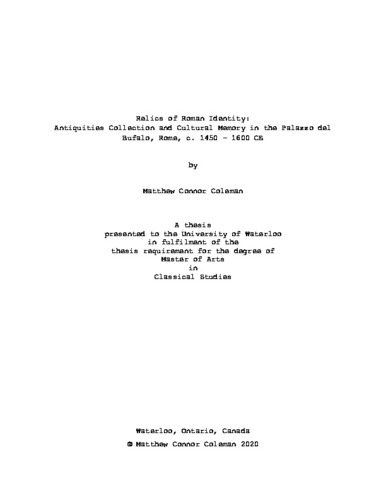| dc.description.abstract | The rapid urban development in Renaissance Rome meant constant excavation and the daily (re)discovery of antique arts and artefacts from the city’s rich classical past. As Rome’s new population began to unearth the domain of their native ancestors, they exercised a great deal of care to preserve the antiquities they found and to acquire and assemble collections. Subsequently, Renaissance families would construct new architecture (i.e., exterior facades, villas, sculpture gardens, etc.) for the purpose of their display. The resulting sociocultural landscape saw that nearly all noble homes in Rome boasted a collection of antiquities accessible for viewing by guests by the end of the 1400s. The aim of this study will be to understand the motivations for such display; be the collections shallow exhibitions of taste, simply means for cultural preservation (cf. private museums), considered political strategy, instruments for the construction of social identity, or some combination thereof. Naturally, these motivations are contingent on the identities of the collectors who curated the groups. As such, the scope of my research will focus on one family’s collection, the del Bufalo at Rome, as both its curators and motivations shift from generation to generation, serving as an exemplar of the period on the whole.
This thesis offers a complete history of the family’s sculpture garden (c. 1450-1600 CE) in the Trevi district at Rome: offering the correct genealogy of the family, dates for curatorship, specific installation programs per individual, and the complete known contents of the garden. This collection of antiquities was chosen as it is understudied in and of itself despite being cited as the fifth largest collection in Rome at the time by Ulisse Aldrovandi and its many connections to the Farnese, d’Este, and Medici antiquities. Contextual discussion presents a clear picture of where this family and their collection fit into the broader social landscape of Rome.
Appendices include English translations of the most important primary sources available for the del Bufalo collection as well as a catalogue and provenance notes for identified extant statues. | en |

